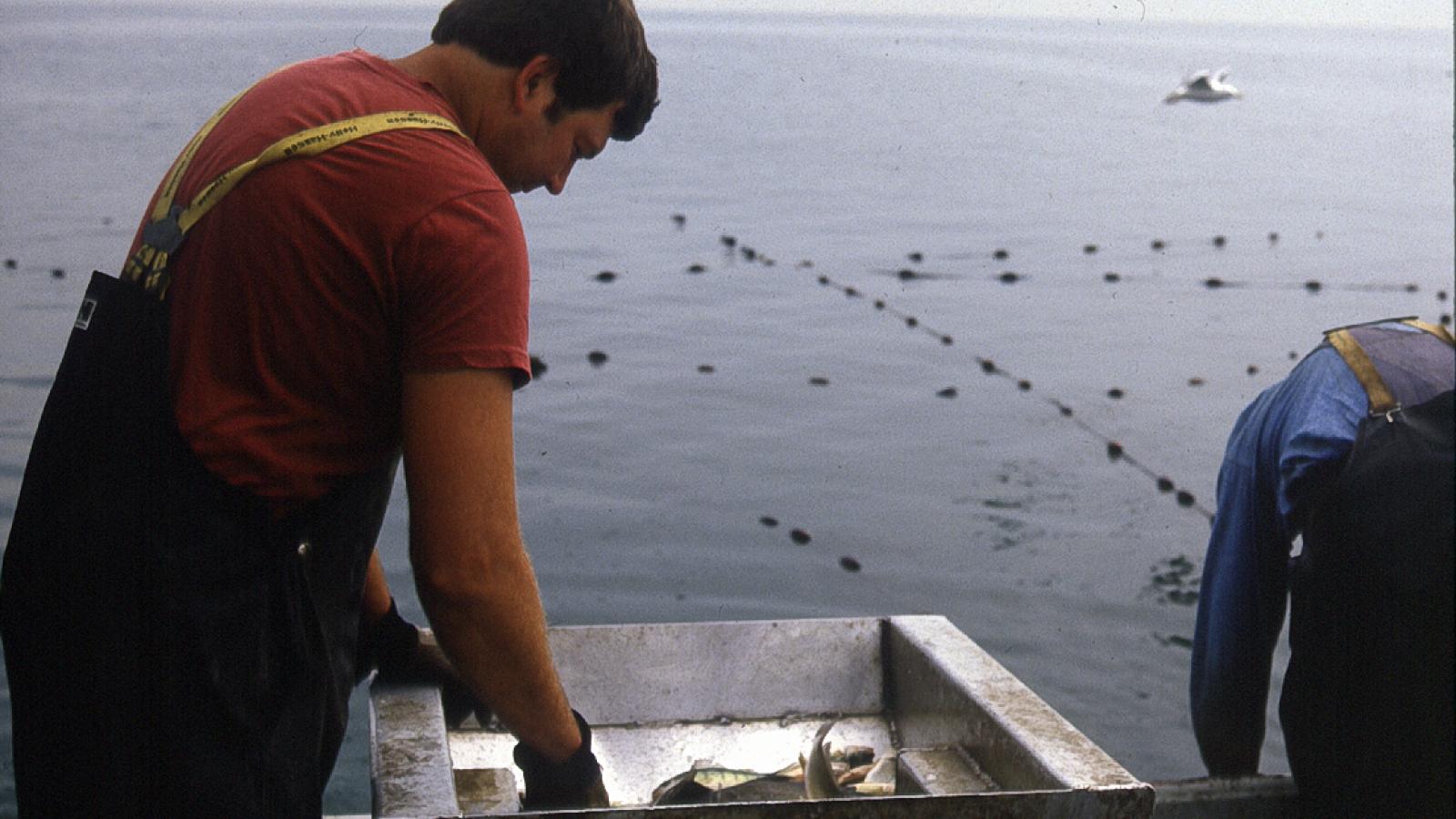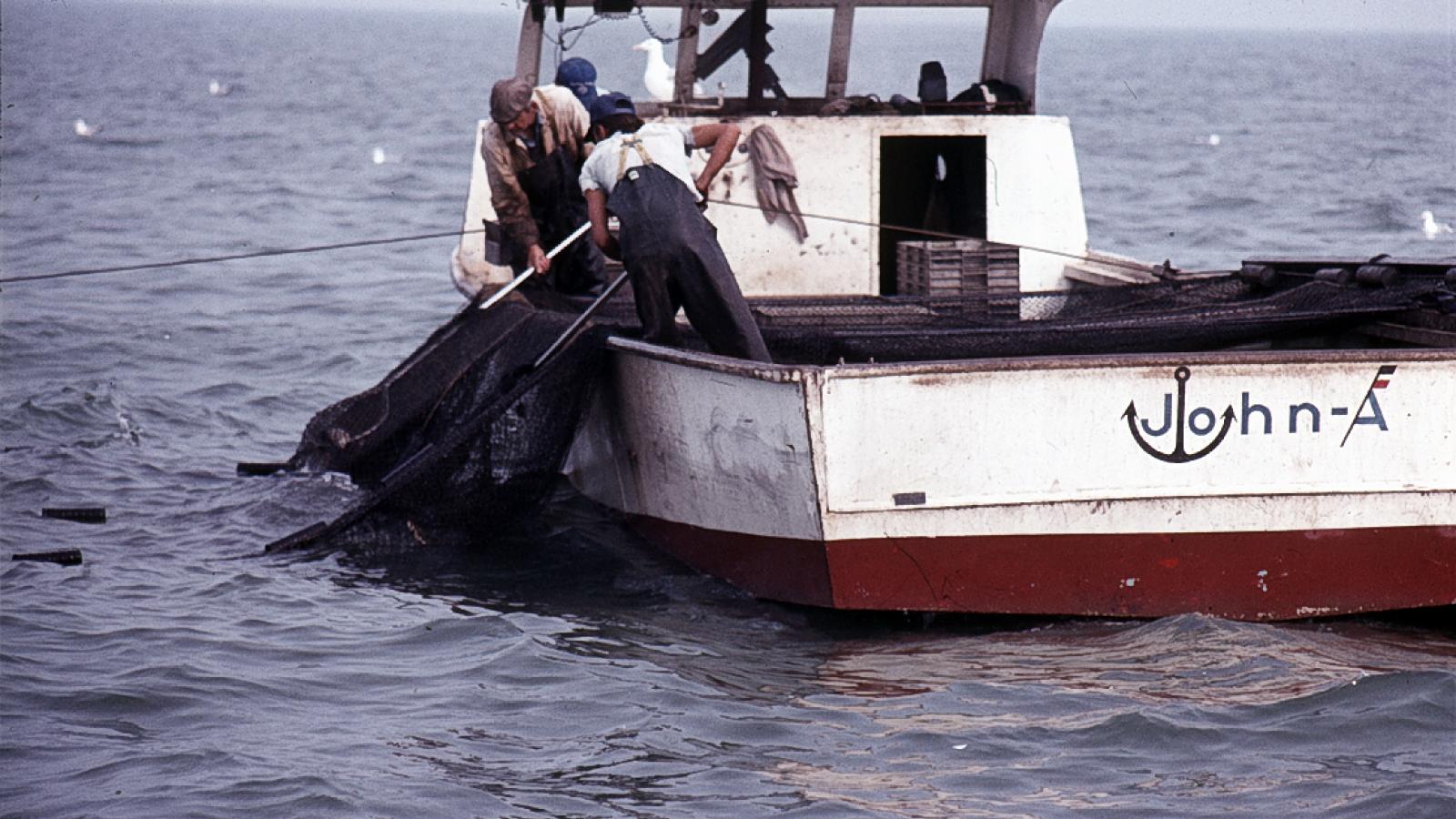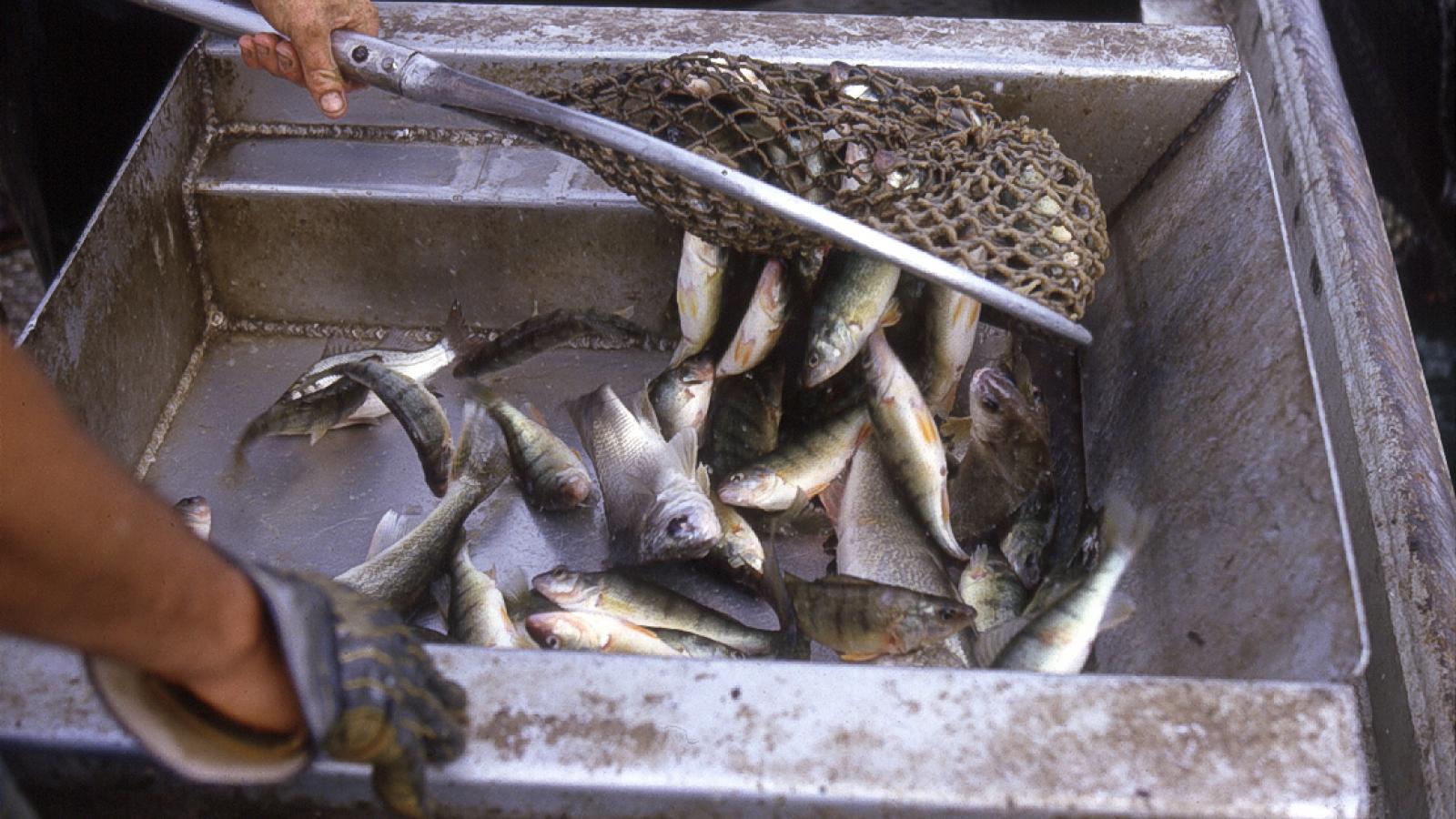Trap Netting
Trap-netting requires an elaborate and carefully designed net structure which is set in the water at a right angle to the suspected path of traveling fish. When fish confront the long “lead” of a trap net, made of heavy-duty netting so that it can be seen by fish underwater, they turn and swim along it, hopefully into a series of successively smaller boxes of net which trap them alive inside. This type of fishing is done both close in and out away from shore, and the length and shape of the lead, the shape of the box openings, the dimensions of the boxes and the placement of the nets themselves all vary, depending upon time of year, the intended location of the net and the behavior of the species fished. Trap nets are marked in the water by buoys at the far end of the lead and at the box, topped by flags with the fisherman's name. Even with buoys and navigational equipment, considerable native ability is required to locate a trap net when the shore is too distant to use as a guide, and when the sky and water visually blend together.
Upon arriving at the box, the fishermen haul the net up next to the side of the boat and unload the fish (see photo 1), placing each allowable species in wooden or plastic containers and icing the catch for the trip back to the fish house. Trap nets are usually set every two weeks, depending upon weather, water and fish movements. A typical trap-netting trip begins at 7:00 a.m., can last until 3:00 or 4:00 p.m., and can involve the “pulling” of 12 to 20 nets.
As mentioned, trap nets need to be custom-made by individual fisherman with necessary skill, and their design depends upon a number of different biological and geographical factors. While some fisherman may scheme out their net patterns on graph paper (see photo 2), the actual construction of a hundred-foot long net structure with a series of complicated tapers of different angles in the boxes (made by counting “so many meshes over, so many meshes down” – see photo 3) is done largely by memory and experience in the net yard. In addition, Lake turbulence, damage caused in pulling and the rotting of effects of water render even the heavy, tarred netting used for trap net fishing in constant need of repair. On almost any off day, and sometimes even when part of a crew is fishing, someone will be on shore at the crew’s net yard, retyping broken knots in the mesh, retarring worn areas in the net or cutting out and replacing rotted sections (see photo 4).
The trap net boat itself differs in design from boats used in other types of commercial fishing. Approximately 30 feet long, it has a small cabin at the bow and low sides for ease in pulling the nets out and fish into the boat. The deck is wide and flat, to accommodate the boxes of fish. Steel boats replaced wooden ones about 60 years ago. There were a number of boatbuilders and boatbuilding companies along the Ohio shore of the western Lake, but today there is only one metal-fabricating firm equipped to build commercial fishing boats, and this company has only repaired them for years, since the fishing business is not nearly lucrative enough to justify the expense of $20,000 for a new boat.







